Affiliate links on Android Authority may earn us a commission. Learn more.
OnePlus 5 vs Samsung Galaxy S8
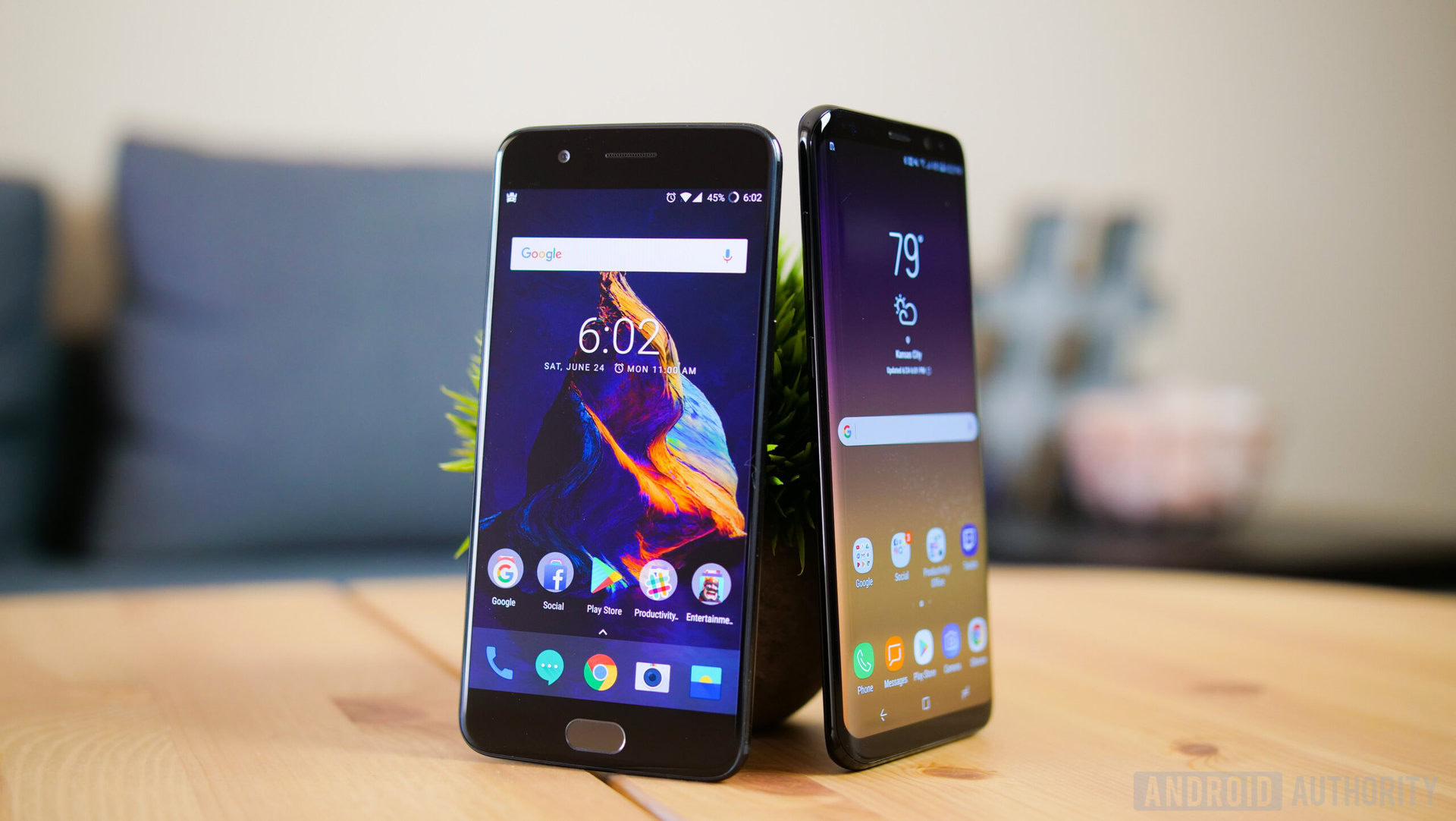
One of the biggest selling points of OnePlus devices in years past are the low price points. Compared to the high-end Samsungs, HTCs, and LGs of the world, OnePlus devices have traditionally carried price tags that are a few hundred dollars lower than the competition.
Now that OnePlus has increased the price point with its latest flagship, is the OnePlus 5 able to go toe-to-toe with the latest and greatest from Samsung? Or does the price difference belie a larger feature gap? We find out, as we take an in-depth look at the OnePlus 5 vs Samsung Galaxy S8 / Galaxy S8 Plus!
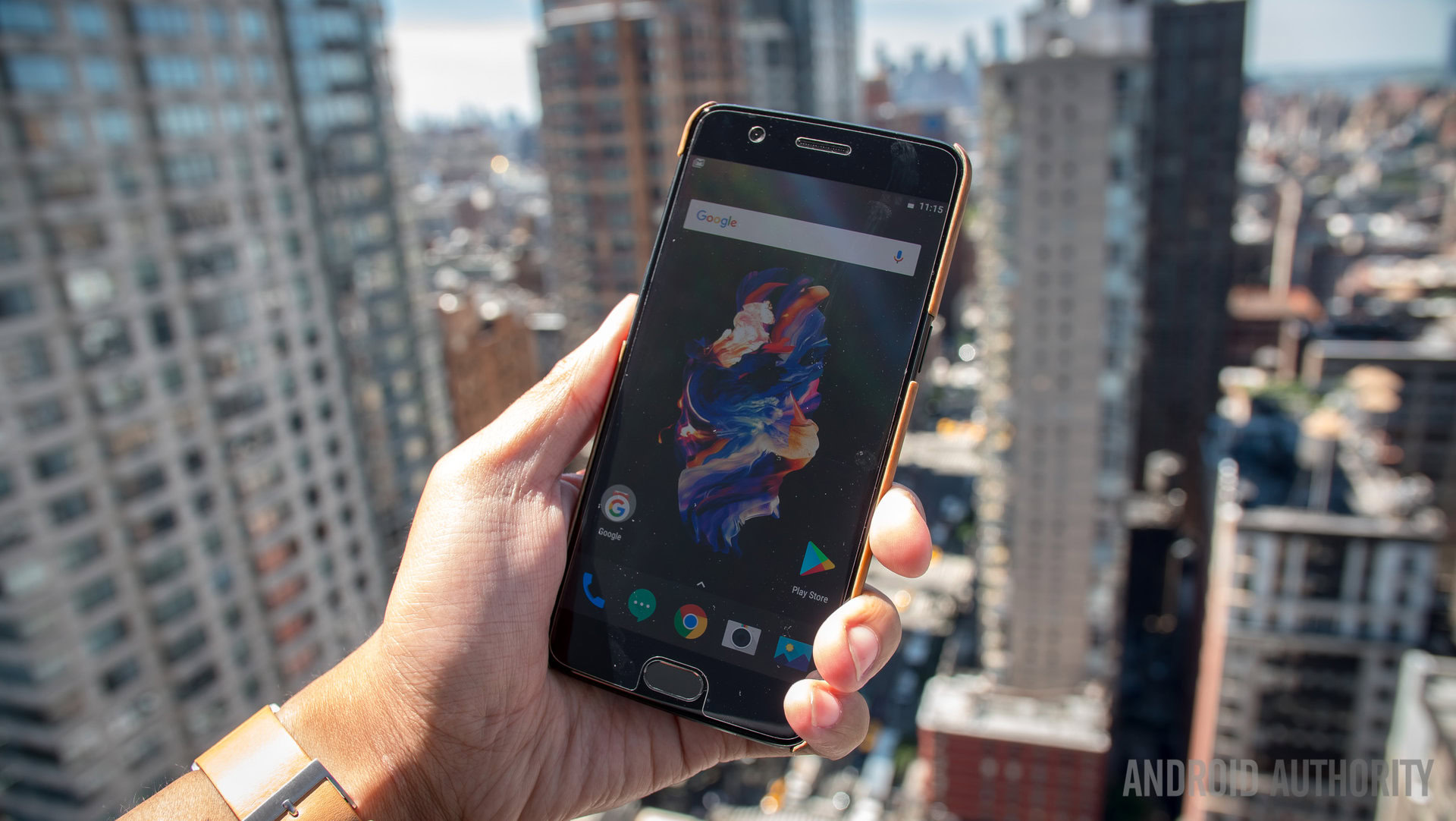
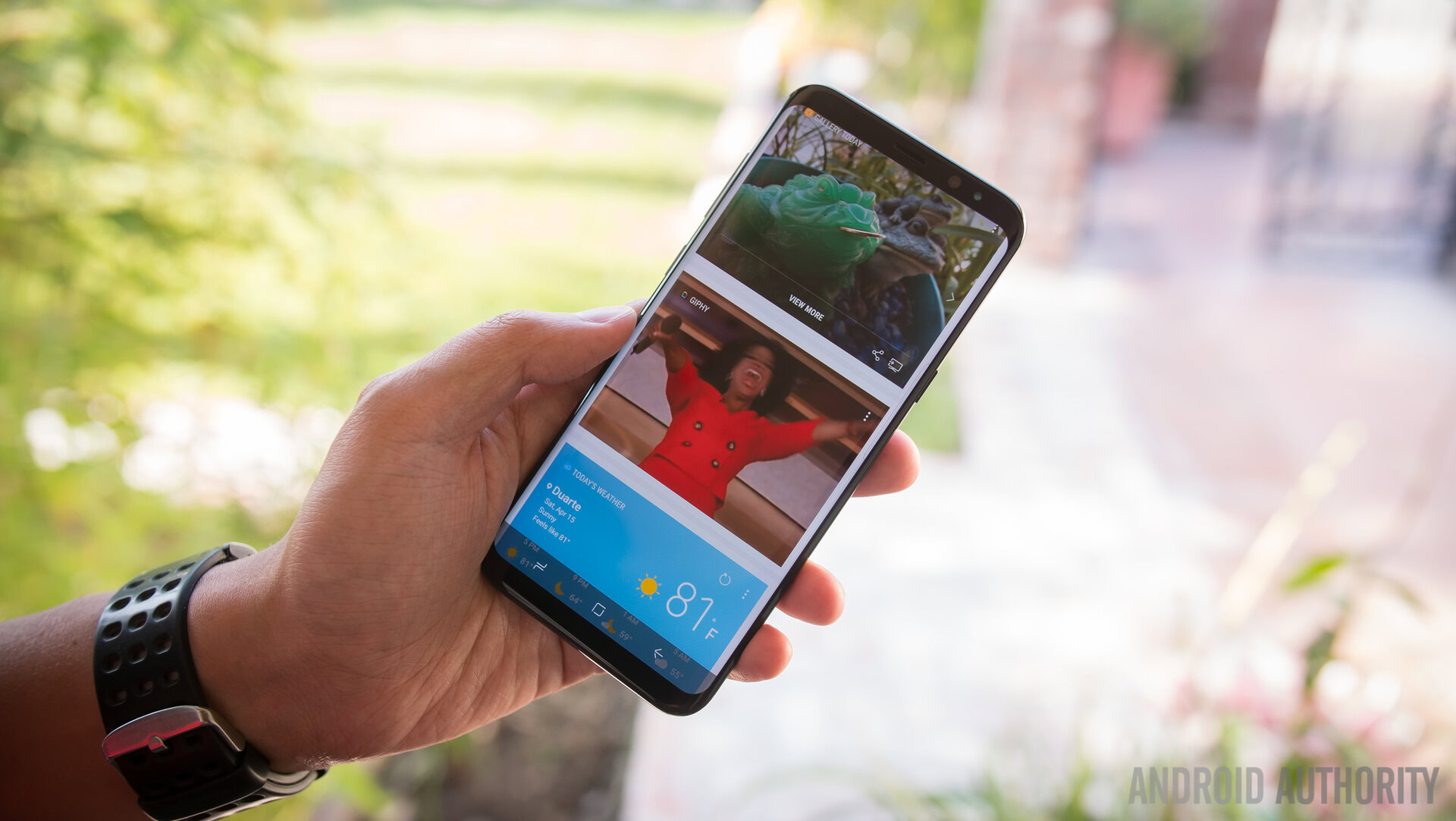
Design
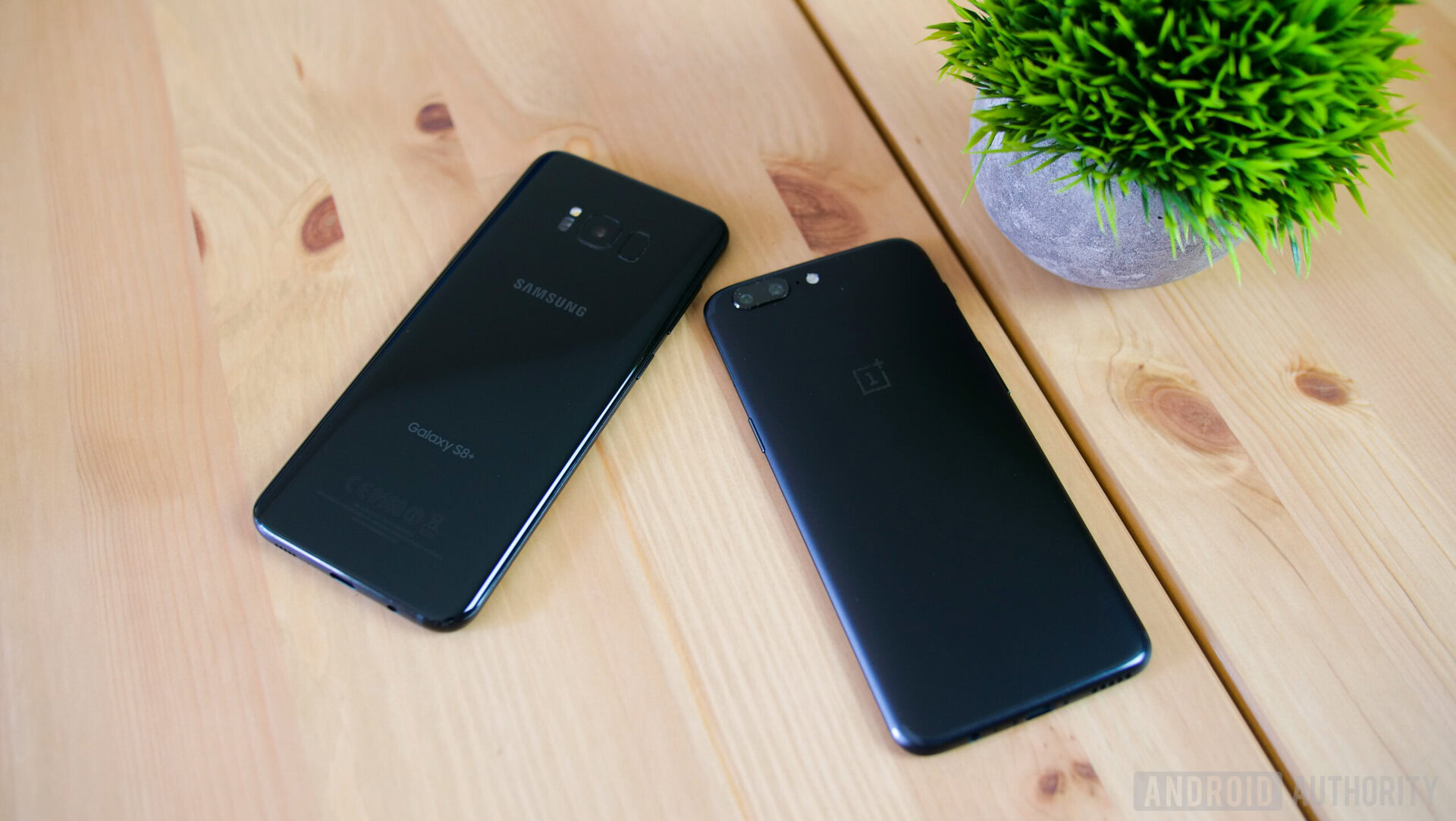
One of the biggest and most obvious differences you’ll notice between the OnePlus 5 and the Galaxy S8 is the way they look and feel.
You get a full metal unibody construction with the OnePlus 5, with its reshaped antenna lines and the look and placement of the dual camera setup resulting in a striking resemblance to the iPhone 7 Plus (or the OPPO R11). Regardless of how you may feel about that, it is still a good looking design and comfortable to hold, largely thanks to its slightly curved back and rounded corners.
The OnePlus 5 is a tad slippery though, so you might want to consider getting a case for your shiny new device.
On the other hand, a mostly glass build that is held together by a metal frame is what you get with the Galaxy S8 smartphones, which has typically been the case since this was introduced a couple of generations ago. Both the front and rear glass panels have been curved for both aesthetic reasons and for comfort in the hand. As good as these phones look, though, it doesn’t take long for your fingerprints to get all over it and somewhat diminish its appearance.
Both the OnePlus 5 and Galaxy S8 look really sleek, but the build material of both smartphones make for quite slippery devices. It’s going to be a toss up between the two as far as handling is concerned.
Display
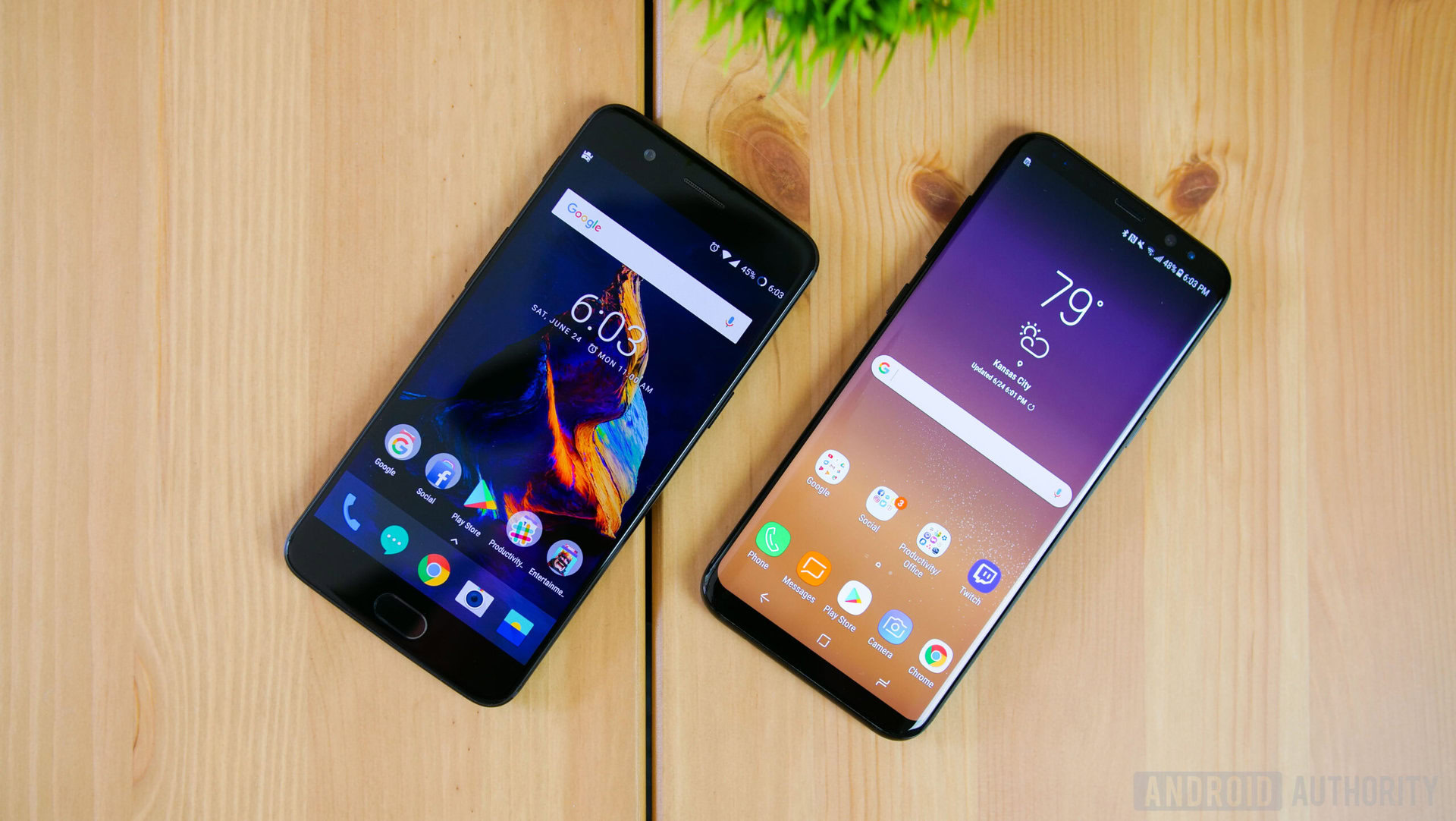
The main attraction of the Galaxy S8 is its display, and it just blows the screen of the OnePlus 5 out of the water.
The Galaxy S8's display is infinitely better in every way
That’s not to say that the 1080p display of the OnePlus 5 is lacking in any way. However, when comparing them side by side, the Galaxy S8 is infinitely (no pun intended) better in every way. The display of the Galaxy S8 is practically edge-to-edge, and by getting rid of the Samsung logo and the physical home button up front, the company was able to shrink down the bezels and stretch the screen vertically to give you more display real estate in a smaller body.
While the displays of both the Galaxy S8 and Galaxy S8 Plus are larger than that of the OnePlus 5, what is truly surprising is that in terms of the size, the OnePlus 5 is actually more similar to the Galaxy S8 Plus. The displays of the Samsung smartphones are incredible to look at, and there’s nothing that is quite comparable currently available in the market.
Performance
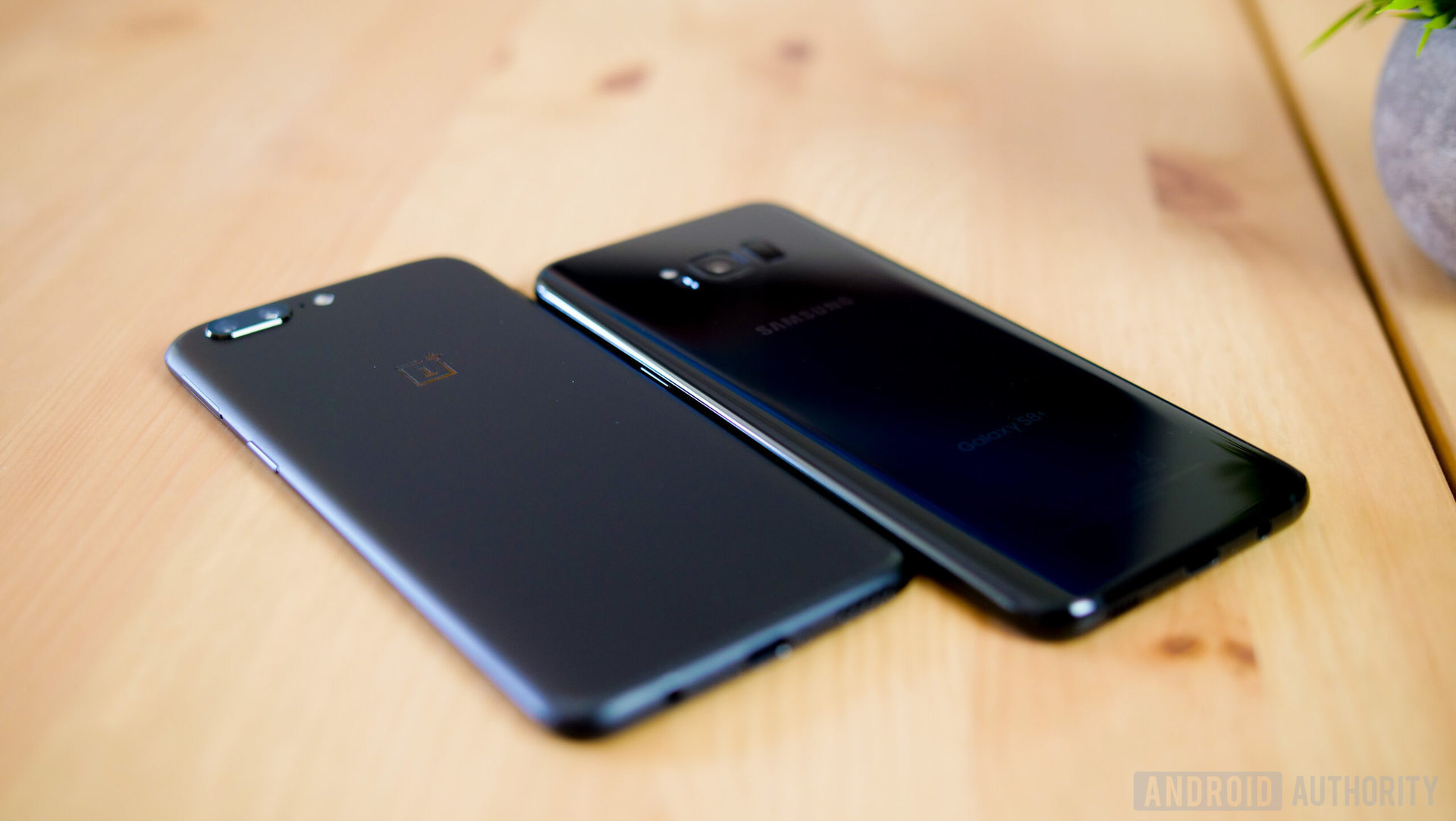
Both the Galaxy S8 and OnePlus 5 come with the fastest processor currently on the market – the Qualcomm Snapdragon 835. With the S8, you’re getting 4 GB of RAM, while the 5 sports either 6 or 8 GB of RAM.
Everything just feels more fluid on the OnePlus 5
Both these phones perform extremely well when it comes to everyday tasks like launching apps, playing games, or browsing the web, but everything feels much more fluid on the OnePlus 5. Some of the credit has to be given to the software package and the faster animations, but it definitely feels like the extra RAM makes a huge difference. The OnePlus 5 can hold a lot of apps in its memory and it has been incredibly difficult to slow this phone down, which is never a bad thing.
Of course, the Galaxy S8 provides a smooth experience as well. Even though the animations are longer, they do make for a more refined appearance. I will admit that the Galaxy S8 does tend to stutter on occasion throughout the day, which isn’t a deal breaker by any means but is something you will notice after using the phone for a while.
Hardware
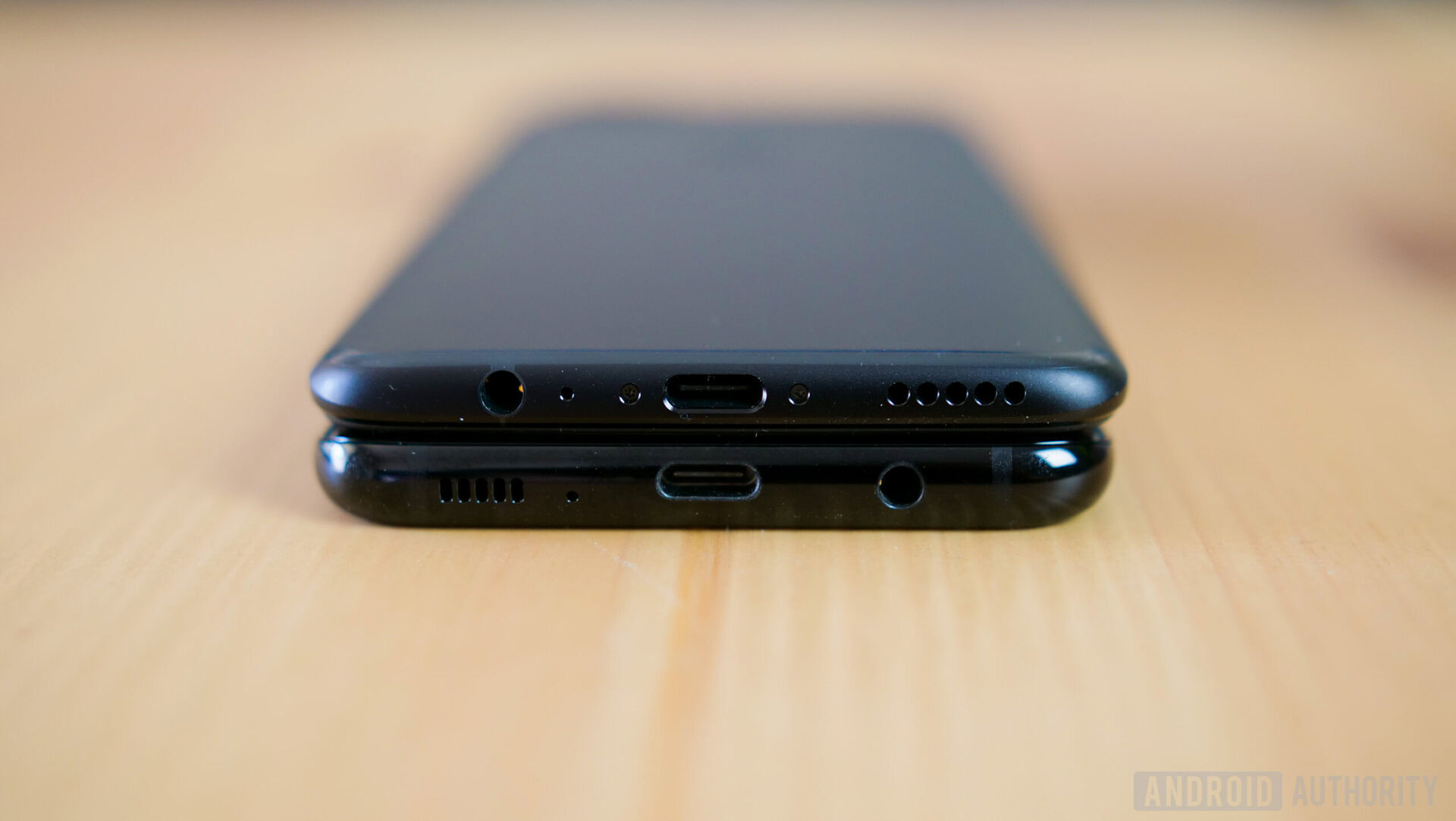
On the hardware side is where the Galaxy S8 has a few advantages over the OnePlus 5, with the former coming with features like wireless charging, expandable storage, and dust and water resistance. Any of these features could be make or break additions depending on what you are looking for from your smartphone experience, but it has to be said that ingress protection is something that is becoming a standard feature with high-end releases. It would have been nice to see with the OnePlus 5 as well.
Ingress protection is something that is becoming a standard feature with high-end releases
Both the Galaxy S8 and the OnePlus 5 come with Bluetooth 5.0 onboard, too.
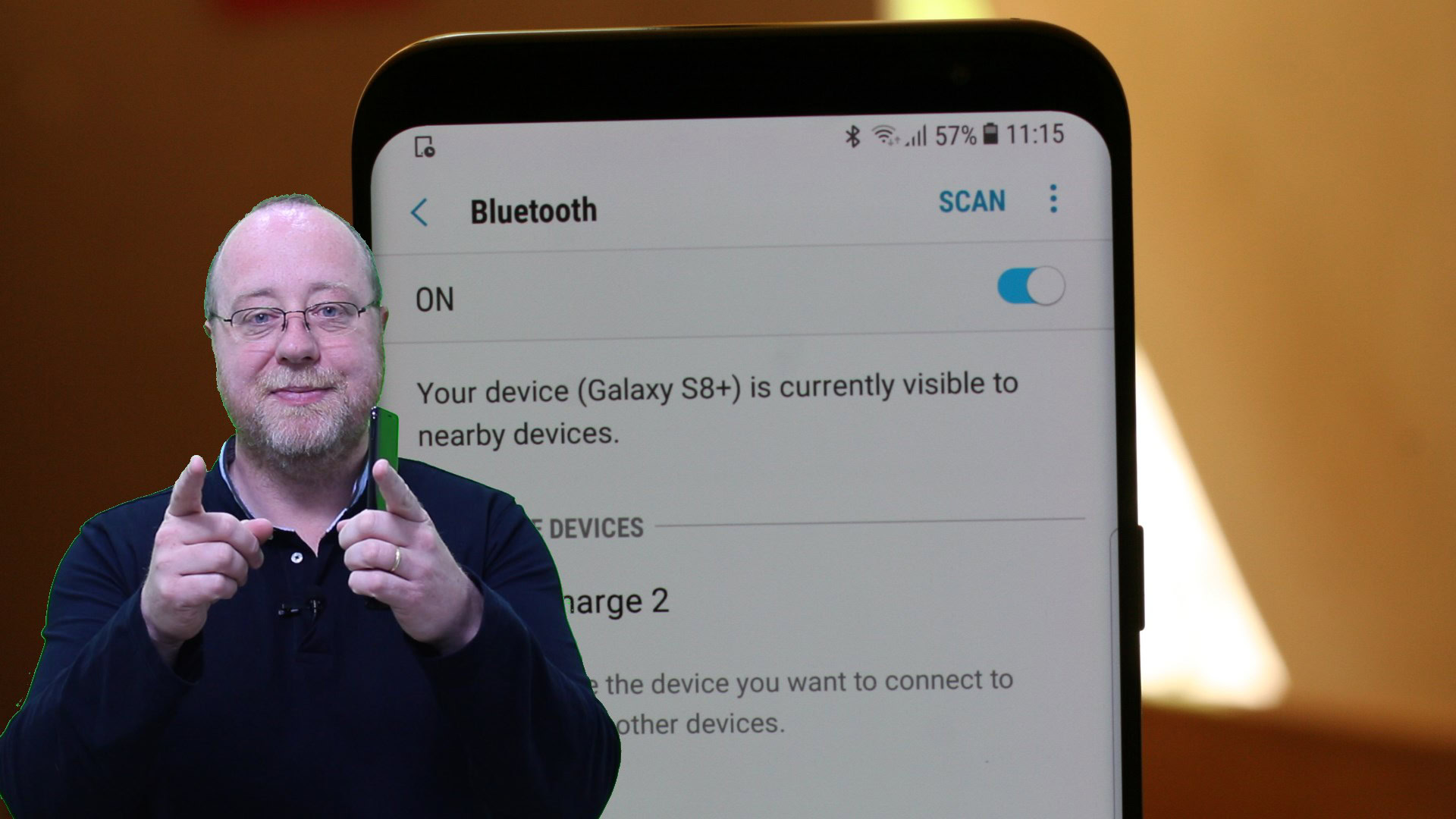
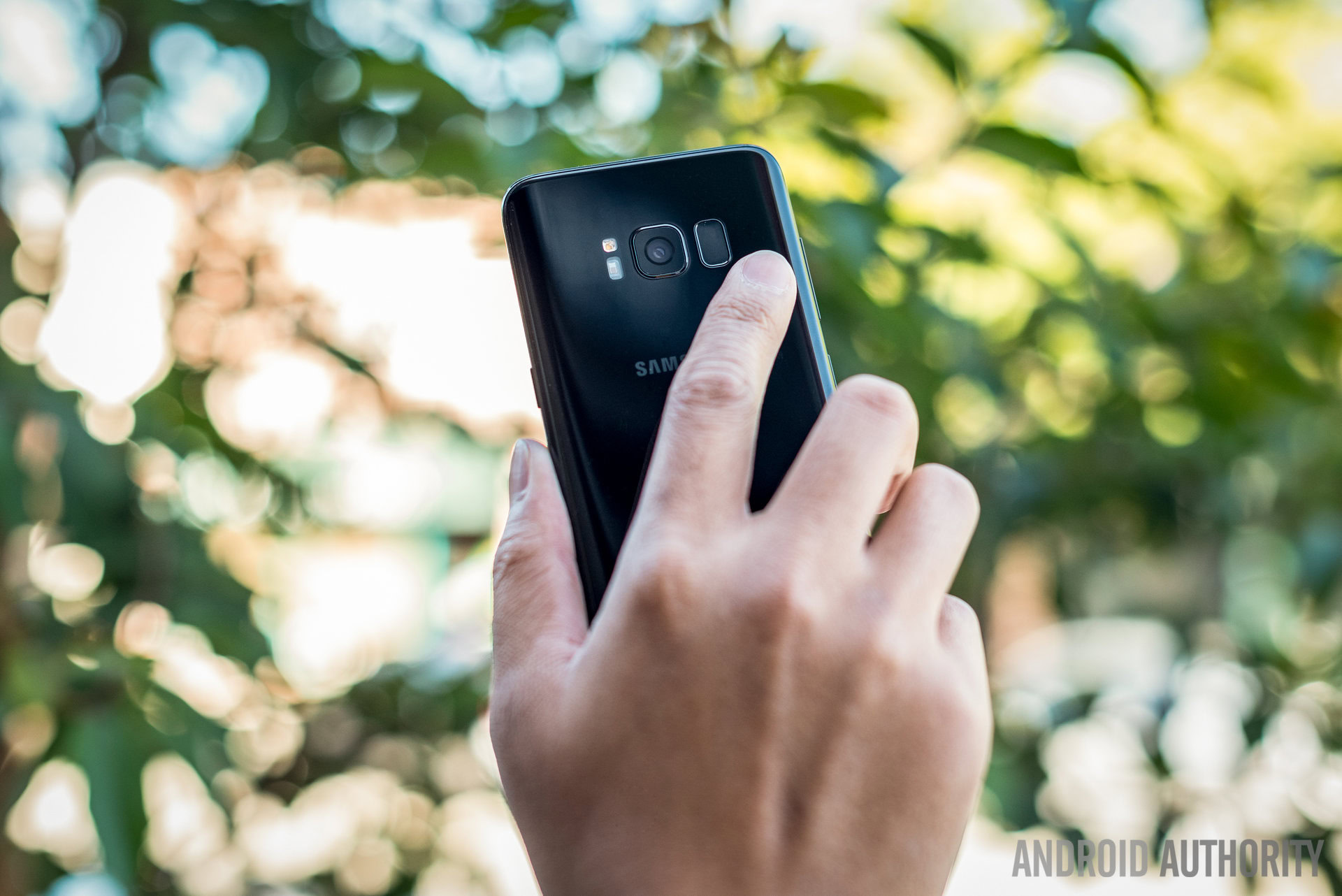
Because of the S8’s new design, Samsung needed to move the fingerprint scanner to the back of the phone. But instead of centering the sensor on the back (like most other devices with rear-mounted sensors), Samsung decided to place it next to the camera module. This placement is pretty awkward.
You do get used to this position eventually but it’s still not the most intuitive location. To make matters worse, the scanner is quite slow and inconsistent. Other unlocking methods like the iris scanner and facial recognition are available as well, but those aren’t the most reliable or 100% secure either. On the other hand, the fingerprint sensor of the OnePlus 5 is at a far more convenient location up front and is also one of the fastest scanners I’ve ever used on a smartphone.
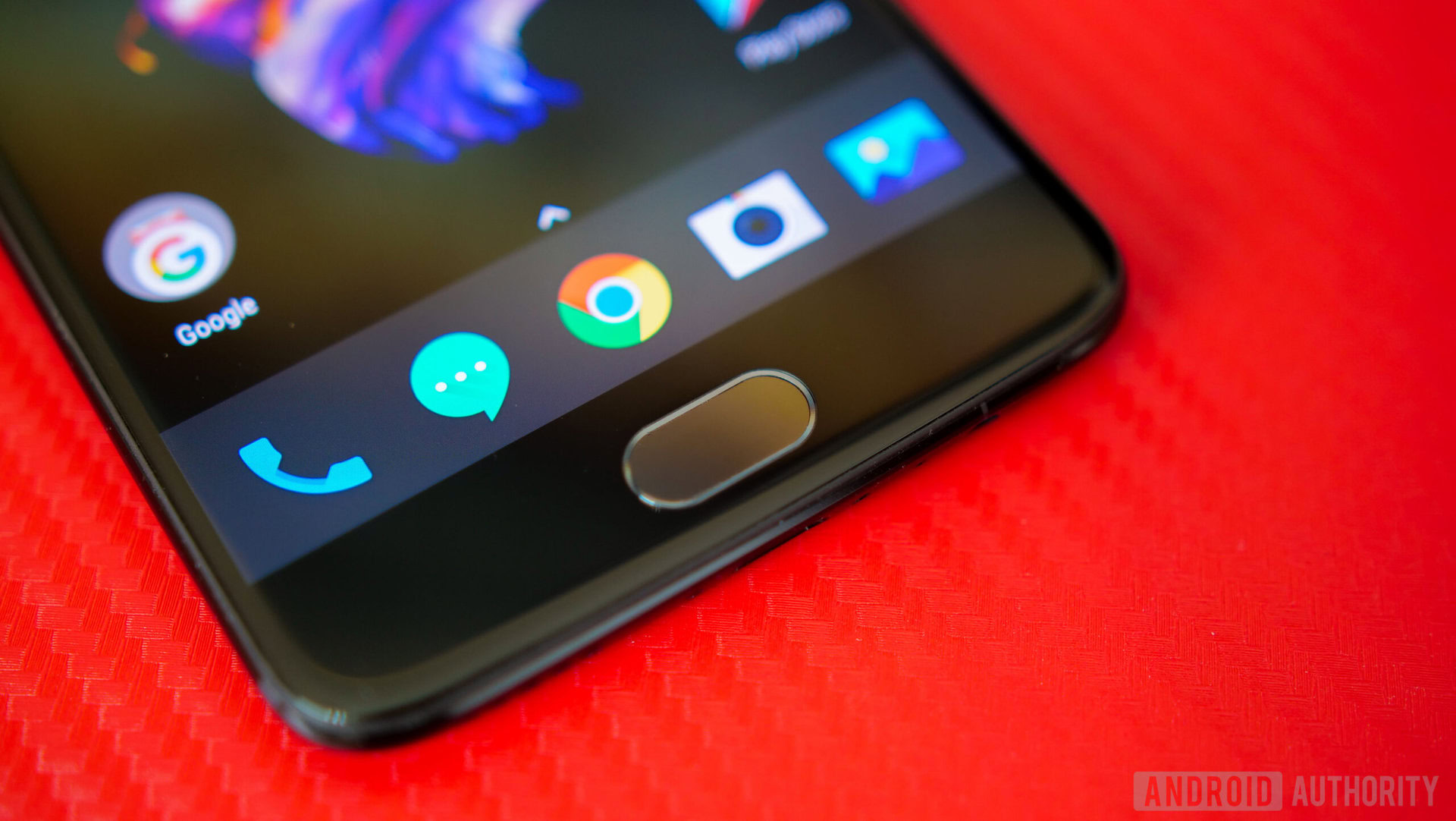
The Galaxy S8 and Galaxy S8 Plus come with 3,000 mAh and 3,500 mAh batteries respectively, while the OnePlus 5 features a 3,300 mAh unit. I have been using the Galaxy S8 Plus as a daily driver and despite it coming with a larger battery, the battery life has been far better with the OnePlus 5.
Both are capable of comfortably lasting throughout an entire day of use, but there’s usually a little more left over with the OnePlus 5. There have also been instances where I’ve been able to push to battery of the OnePlus 5 to last up to a day and a half, which has never happened with the Galaxy S8 Plus. You can definitely see the advantages of having a 1080p display with regards to battery life when looking at the battery performance of the OnePlus 5.
I also prefer OnePlus’ Dash Charge technology over Samsung’s fast charging method. Dash Charge is just significantly faster than the other, and it quite possibly the fastest charging method that is currently available on any smartphone.
Camera
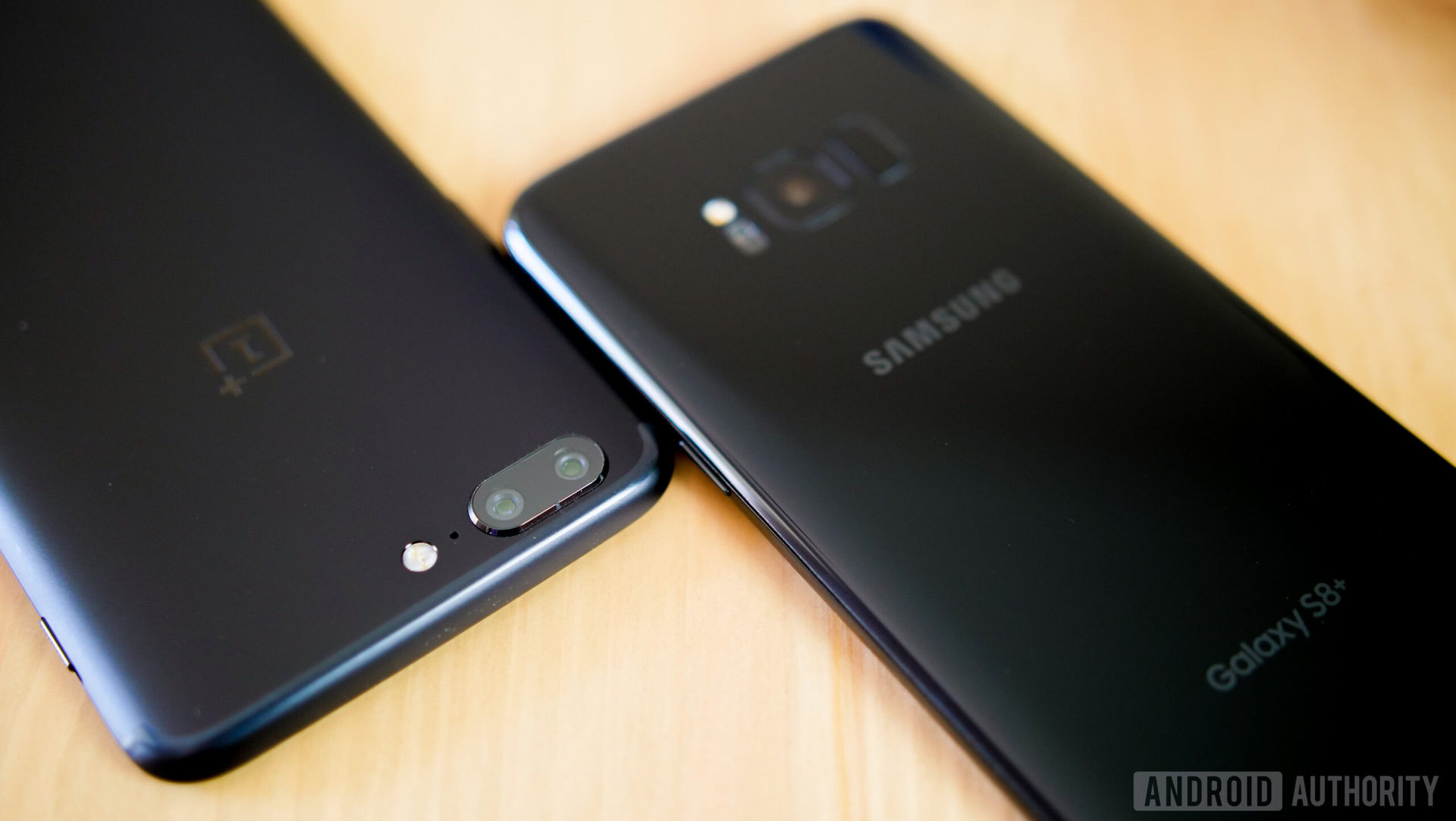
The biggest change OnePlus has made this year is to the camera. The OnePlus 5 has a dual camera setup with a 16 MP main sensor with a f/1.7 aperture and a 20 MP secondary unit with a f/2.6 aperture. The latter is a telephoto lens that allows for 2x lossless zoom and the ability to emulate a blurry background or bokeh effect with its portrait mode.
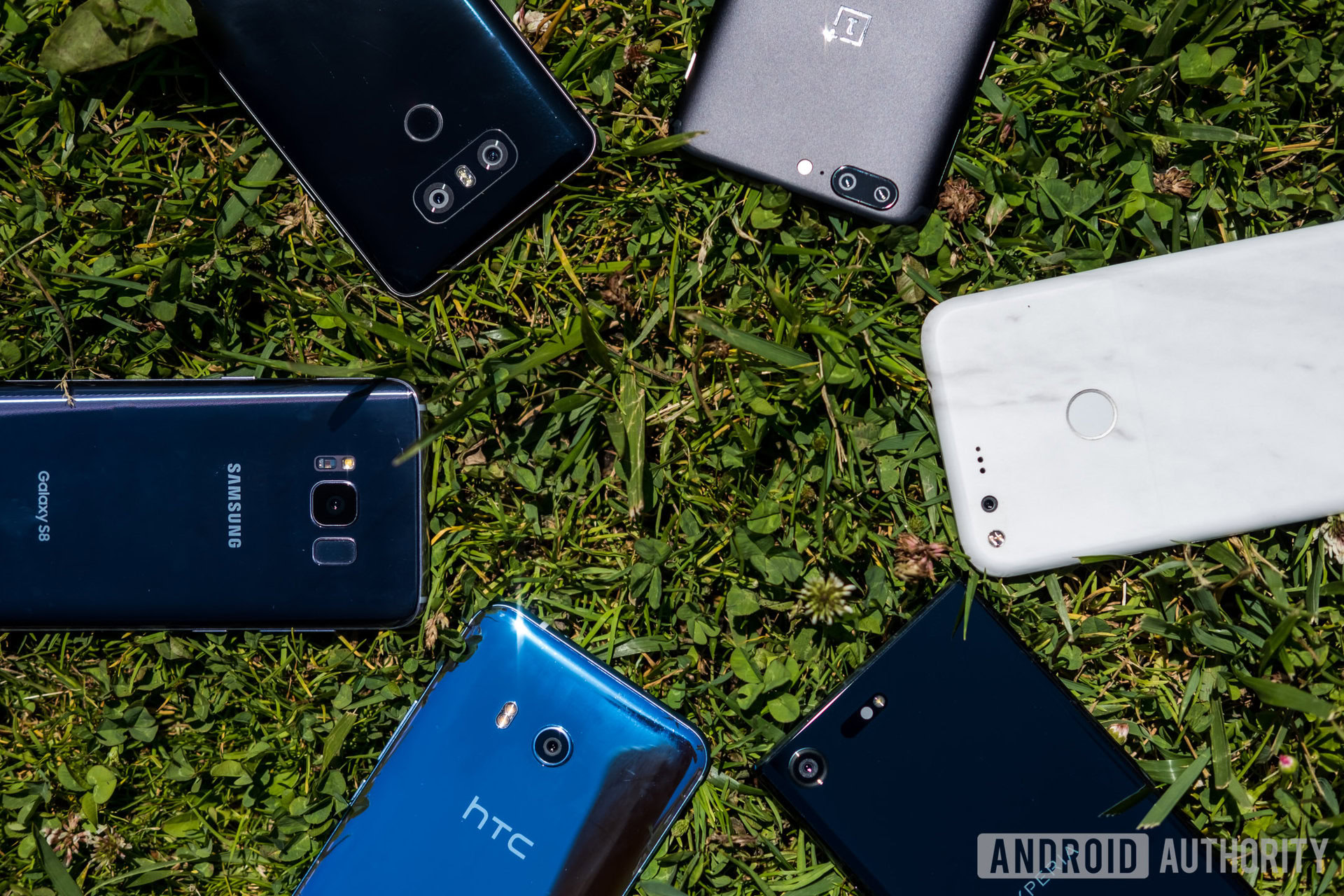
On the other hand, Samsung has stuck to a more traditional camera setup, with a single 12 MP shooter with a f/1.7 aperture and it also comes with optical image stabilization, which isn’t available with either sensor of the OnePlus 5. The lack of OIS on the OnePlus 5 makes a huge difference, particularly when shooting in low light conditions. The OnePlus 5’s photos are noticeably softer in detail, less sharp, noisier, and tend to have orange-y color tones that don’t look very natural.
OnePlus 5 camera samples
Samsung Galaxy S8 / S8 Plus camera samples
OnePlus is able to close the gap in well-lit situations, with images that aren’t that far off from what the Galaxy S8 is able to produce. However, the differences are much easier to spot once you look at lot closer. The OnePlus 5 tends to ever so slightly overexpose images, making the colors, shadows, and blacks look much more washed out. When you zoom in, you can see that the photos are just not quite as sharp or as detailed as what is seen with the Galaxy S8.
Software
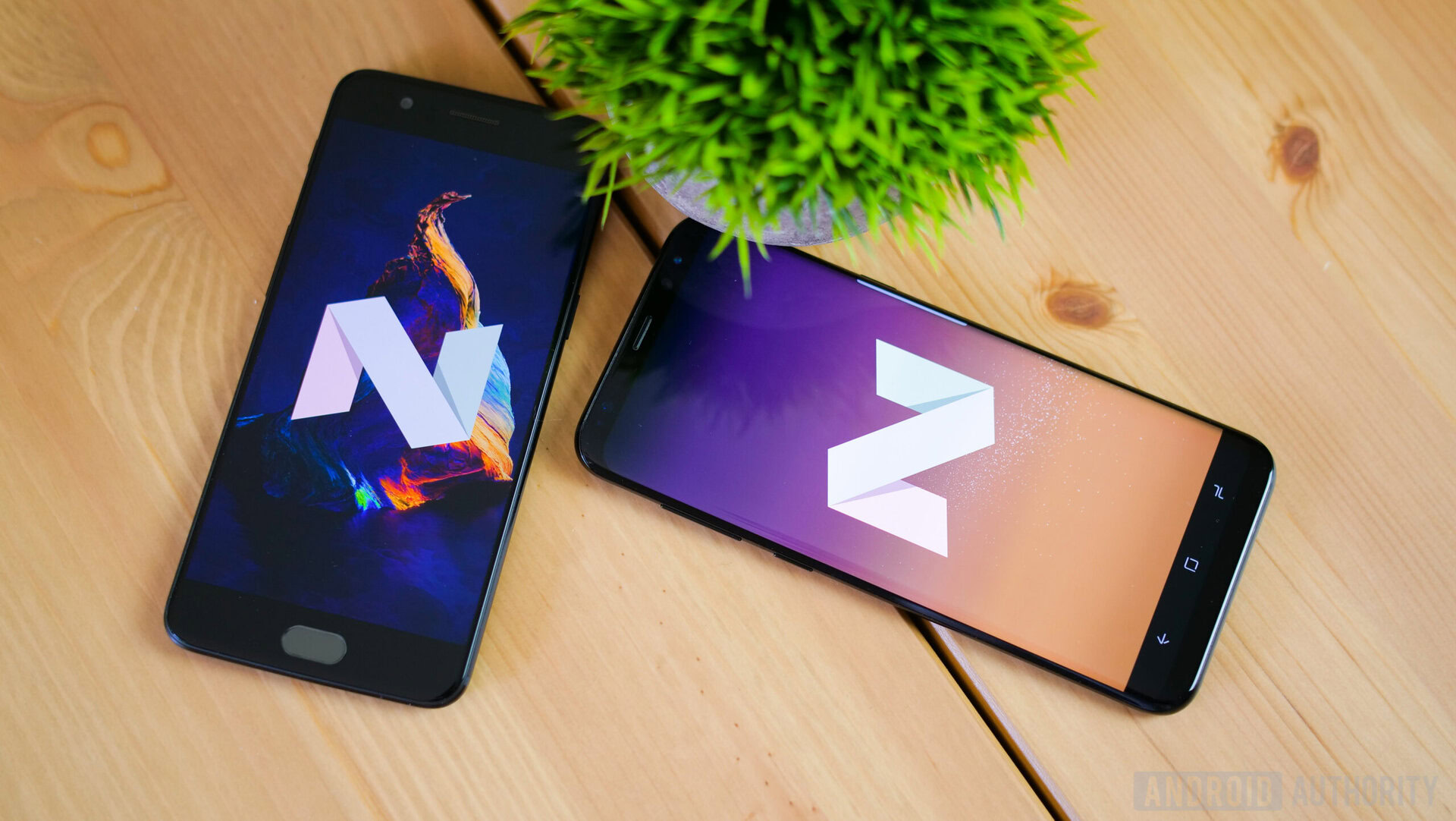
Software certainly plays a huge role in the overall experience here. While I like what both Samsung and OnePlus have to offer, I prefer the latter simply because it is a lot closer to stock Android or what you get with the Google Pixel, albeit with a lot of nice features on top to customize the OS. You can change the accent colors, switch to a great-looking dark theme, enable on-screen navigation keys, and use a variety of off-screen gestures to launch the camera, turn on the flashlight, or open an application of your choice.
The new version of the OxygenOS has introduced a few new features as well, including a reading mode that turns the screen to grayscale to make it easier on the eyes, and a “do not disturb” mode created specifically so that you aren’t interrupted in the middle of of playing a game.
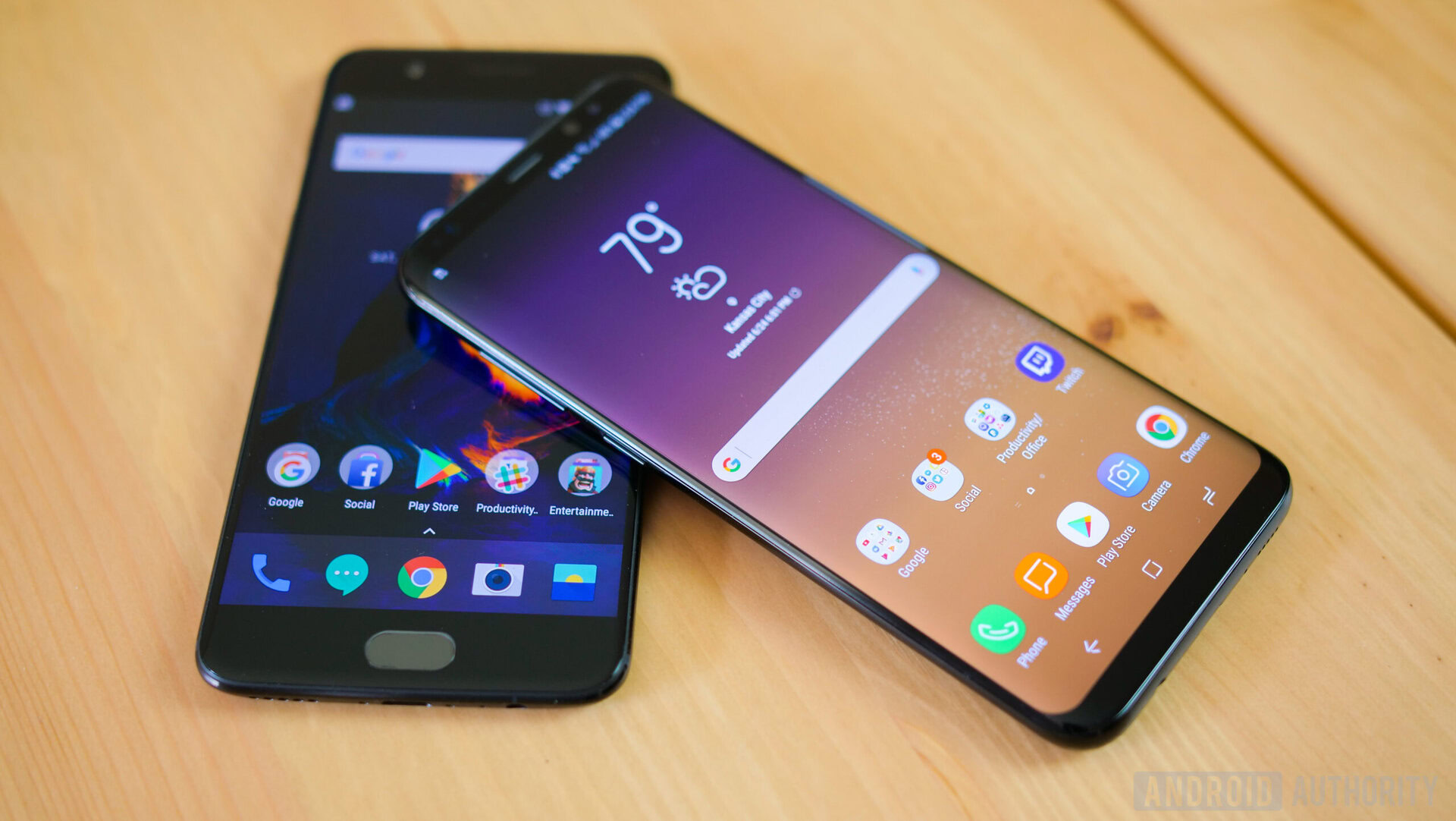
Samsung has also done a great job with improving their software package by introducing cleaner icons and a toned down color scheme. Everything is really enjoyable for the most part. Samsung has a bunch of software tricks of their own, like the Game Launcher for managing all your games in one place, the theme engine that lets you customize virtually every part of the user interface, and the very useful Always On Display that is also highly customizable and can show important information like the time, date, and notifications.
The biggest problem with Samsung’s software continues to be all the extra bloatware and duplicate applications. The addition of Samsung’s AI assistant, Bixby, which isn’t even fully available yet, only further adds to the redundancy, especially when the phone already comes with Google Assistant. Samsung even went as far as to add an additional hardware button to encourage the use of Bixby, but that isn’t a move that has paid off so far. Of course, that might change when Bixby Voice gets out of beta and comes available to everyone. The OnePlus 5 also comes with an extra hardware button, but this one has a more practical use, by allowing you to easily switch between different notification profiles.
Specs comparison
| OnePlus 5 | Samsung Galaxy S8 / Galaxy S8 Plus | |
|---|---|---|
Display | OnePlus 5 5.5-inch AMOLED 1920 x 1080 resolution 401 ppi 16:9 aspect ratio | Samsung Galaxy S8 / Galaxy S8 Plus 5.8- or 6.2-inch Quad HD+ Super AMOLED 2960 x 1440 resolution 570 or 529 ppi 18.5:9 aspect ratio |
Processor | OnePlus 5 2.45 GHz octa-core Qualcomm Snapdragon 835 mobile platform | Samsung Galaxy S8 / Galaxy S8 Plus U.S.: 64-bit octa-core (2.35 GHz Quad + 1.9 GHz Quad) Qualcomm Snapdragon 835, 10 nm process Global: 64-bit octa-core (2.3 GHz Quad + 1.7 GHz Quad) Samsung Exynos 8895, 10 nm process |
RAM | OnePlus 5 6/8 GB LPDDR4 | Samsung Galaxy S8 / Galaxy S8 Plus 4 GB LPDDR4 |
Storage | OnePlus 5 64/128 GB UFS 2.1 | Samsung Galaxy S8 / Galaxy S8 Plus 64 GB UFS 2.1 |
MicroSD | OnePlus 5 No | Samsung Galaxy S8 / Galaxy S8 Plus Yes, up to 256 GB |
Cameras | OnePlus 5 Rear camera Main: 16 MP Sony IMX 398 sensor, 1.12 μm, ƒ/1.7 aperture, EIS, dual LED flash Telephoto: 20 MP Sony IMX 350 sensor, 1.0 μm, ƒ/2.6 aperture Front: 16 MP Sony IMX 371 sensor, 1.0 μm, ƒ/2.0 aperture, EIS | Samsung Galaxy S8 / Galaxy S8 Plus Rear: 12 MP AF sensor, 1.4 μm, ƒ/1.7 aperture, OIS, LED flash Front: 8 MP AF sensor, 1.22 μm, ƒ/1.7 aperture |
Battery | OnePlus 5 3,300 mAh Non-removable Dash Charge (5V 4A) | Samsung Galaxy S8 / Galaxy S8 Plus 3,000 or 3,500 mAh Non-removable Fast charging |
Water resistance | OnePlus 5 No | Samsung Galaxy S8 / Galaxy S8 Plus IP68 dust and water resistance |
Software | OnePlus 5 Android 7.1.1 Nougat OxygenOS | Samsung Galaxy S8 / Galaxy S8 Plus Android 7.0 Nougat TouchWiz |
Dimensions and weight | OnePlus 5 154.2 x 74.1 x 7.25 mm 153 g | Samsung Galaxy S8 / Galaxy S8 Plus S8: 148.9 x 68.1 x 8mm, 155 g S8 Plus: 159.5 x 73.4 x 8.1 mm, 173 g |
Gallery
Final thoughts
While these phones may be separated by up to a couple of hundred dollars, they are a lot closer than you might think. However, that doesn’t mean that the cheaper price tag of the OnePlus 5 hasn’t resulted in any compromises, and you can definitely tell where it falls short.
There are things that I think the OnePlus 5 does better than the Galaxy S8, especially with regards to the general performance and the software experience. But for me, the latter is the more well-rounded device when you take everything into consideration even if that means having to deal with a higher price tag.
Which smartphone would you pick between these two? Do share your thoughts in the comments section below!